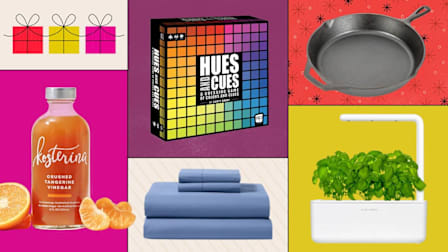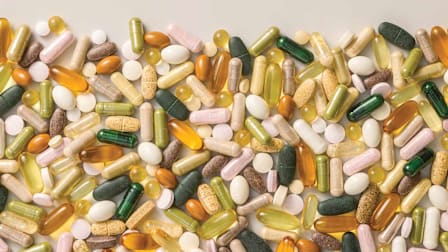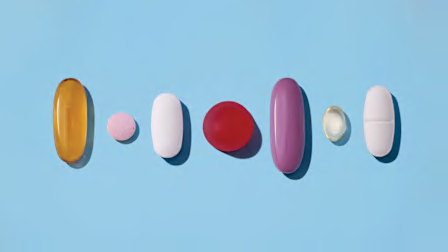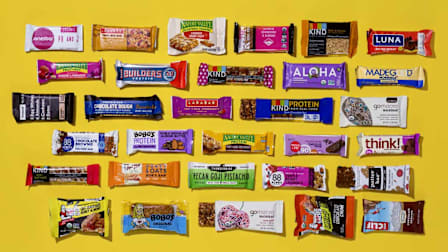Holiday Foods Face-Off: Which Is Healthier to Eat?
We compare seasonal favorites to see which ones give you a nutritional edge
When it comes to healthy eating success, vowing to give up your favorite foods never works, and that’s doubly true around the holidays. In fact, nutrition pros approve, and even encourage, taking a break from your health goals to enjoy those seasonal favorites.
Ham or Roast Beef?
Spiral ham is lean—supplying 126 calories, 4 grams of fat, and less than 1 gram of saturated fat in 3½ ounces. The calorie and fat content of roast beef depends on the cut. For instance, bottom round roast has 169 calories, 5 grams of fat, and 2 grams of saturated fat in 3½ ounces cooked. The same size serving of bottom sirloin (tri-tip) roast has 193 calories, 10 grams of fat, and 4 grams of saturated fat; top sirloin has 173 calories, 6 grams of fat, and 2 grams of saturated fat. Rib-eye roast has 307 calories, 24 grams of fat, and 10 grams of saturated fat.
So while the ham might look like the healthiest option, beef is better if you choose a lean cut. Spiral hams are cured, which means they contain nitrates and nitrites, which, when they interact with protein, create compounds called nitrosamines—which may cause cancer. Plus, ham is very high in sodium: 986 mg in 3½ ounces. (You should get no more than 2,300 mg of sodium per day.)
Better pick: Roast beef
Canned Cranberry Sauce or Gravy?
Choosing between these two turkey-toppers? Gravy is high in sodium, with 340 mg per ¼ cup. However, canned cranberry sauce packs 22 grams of added sugars in the same serving size. That’s more than a slice of apple or pumpkin pie. The American Heart Association recommends women have no more than 25 grams of added sugar a day; men no more than 36 grams. And cranberry sauce has almost quadruple the calories of gravy. However, if you make your own sauce or relish from fresh or unsweetened frozen berries, you can control the sugar content.
Better pick: Gravy
Parker House Rolls or Cornbread?
Ounce-for-ounce, both have roughly the same number of calories and grams of carbohydrates. While cornmeal has some vision-protecting lutein and zeaxanthin, neither option provides a ton of nutrients, and that’s okay. Not every item on the plate has to be a superfood. Cornbread can be enjoyed plain, however, while a roll will probably be slathered with butter or drowned in oil, says Joan Salge Blake, RDN, a nutrition professor at Boston University.
Better pick: Cornbread
Cheese and Crackers or Chips and Dip?
These two starters have a lot in common, starting with the fact that they’re both easy to overeat, as foods that are high in carbohydrates and sodium tend to be. Cheese and dips both pack a lot of sodium, and—unless you’re talking about vegetable- and bean-based dips like salsa, guacamole, or hummus—saturated fat.
Calorie-wise, the choices are even. Five Ritz crackers with two cubes of Swiss cheese or an ounce of potato chips with 2 tablespoons of onion dip provide about 200 calories.
But with cheese and crackers, you get a decent amount of calcium, says Lona Sandon, PhD, an associate professor of nutrition at the University of Texas Southwestern Medical Center in Dallas. Two cubes of Swiss cheese have 267 mg, about 21 percent of the daily value (1,300 mg). The cheese also supplies 8 grams of satisfying protein, and there’s evidence that cheese may not be as harmful to your heart or your weight as was once thought. And if you choose thin slices of cheese and eat them sandwiched with pieces of fruit like apples or pears in place of crackers, you’ll get filling fiber and loads of flavor.
Better pick: Cheese and crackers
Pumpkin Pie or Apple Pie?
Though you may try to convince yourself that any food that contains pumpkins or apples is a healthy choice, pie is still a special occasion dessert. Calories, carbohydrates, and fat are realities either way. Pumpkin pie, though, will have about 100 fewer calories per slice than apple pie, primarily because it has only one crust, says Salge Blake. More crust means more calories and saturated fat from the butter or shortening used to make it. (Or try CR’s Crustless Pumpkin Pie recipe.)
Better pick: Pumpkin pie
Fudge or Milk Chocolate?
You might think that a mini foil-wrapped Santa or a few chocolate coins would be similar nutritionally to a piece of fudge, but that’s not the case. An ounce of fudge has 23 grams of added sugars. An ounce of milk chocolate has 15 grams of added sugars. Fudge is lower in calories (119 vs. 151) and saturated fat (1.5 grams vs. 5 grams), but the two teaspoons of added sugars you save makes milk chocolate slightly better.
Better pick: Milk chocolate
Sufganiyot (Jelly Doughnuts) or Rugelach?
Doughnuts get a bad rap because they’re fried. But with a dough typically made with butter and cream cheese, rugelach isn’t necessarily the better choice. A lot depends on the size of the treat and what’s in the recipe, but in a few recipes for small jelly doughnuts we saw, one doughnut has 135 to 145 calories and is surprisingly low in added sugars, about 5 grams. One rugelach cookie—and who eats just one?—can have 100 to 150 calories and 3 to 9 grams of sugars.
Better pick: Sufganiyot
Fruitcake or Panettone?
These traditional yuletide treats have similar calorie and sugar counts, and both contain dried fruit. But the colorful glacé fruit often used in fruitcake is made with artificial dyes, including Red Dye No. 40, which will be banned by the end of 2026. Panettone typically doesn’t have those.
Better pick: Panettone
Champagne or a Cocktail?
All pure alcohol contains 7 calories per gram and little other nutritional value. But that’s just the beginning of the story. Bartenders may add intrigue in the form of mixers like pomegranate or cherry juice, which make some cocktails sound like wellness tonics. But the juices still add calories.
What’s more, mixed drinks can include far more alcohol than you realize, which can make all of your other thoughtful decisions about what to eat go out the window. With Champagne, you know exactly what you’re getting, says Salge Blake. Better to opt for the drink where you can see how much alcohol you’re sipping. Whatever your choice, though, stick to one drink and enjoy it.
Better pick: Champagne

















